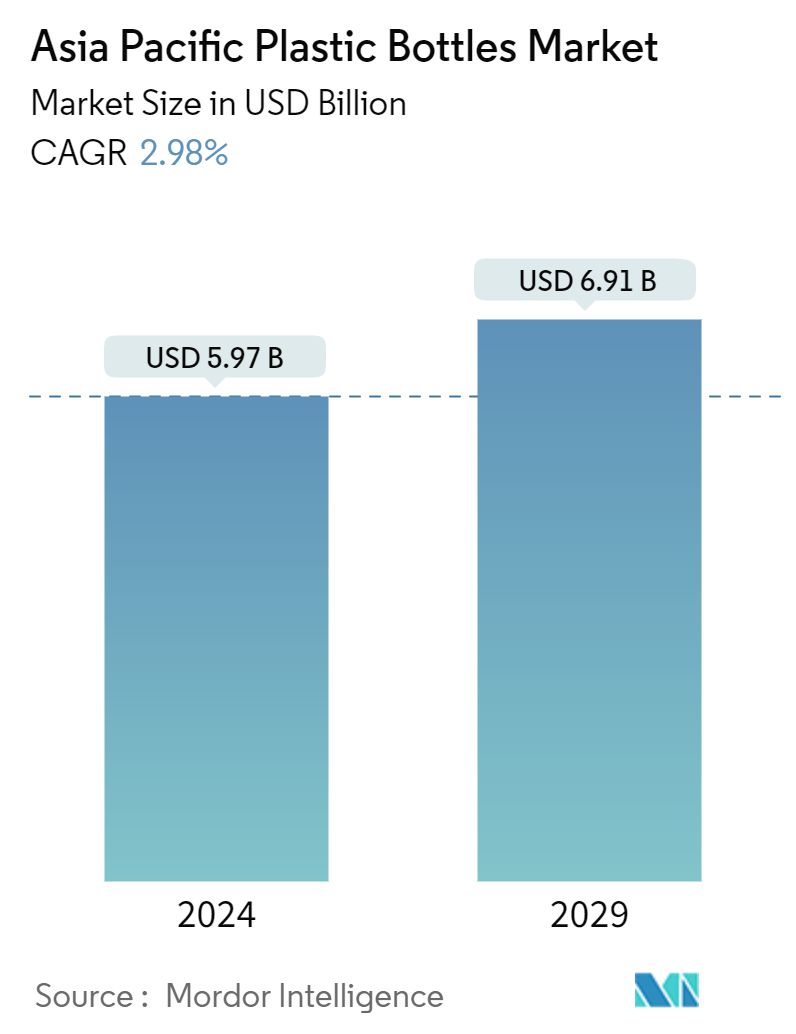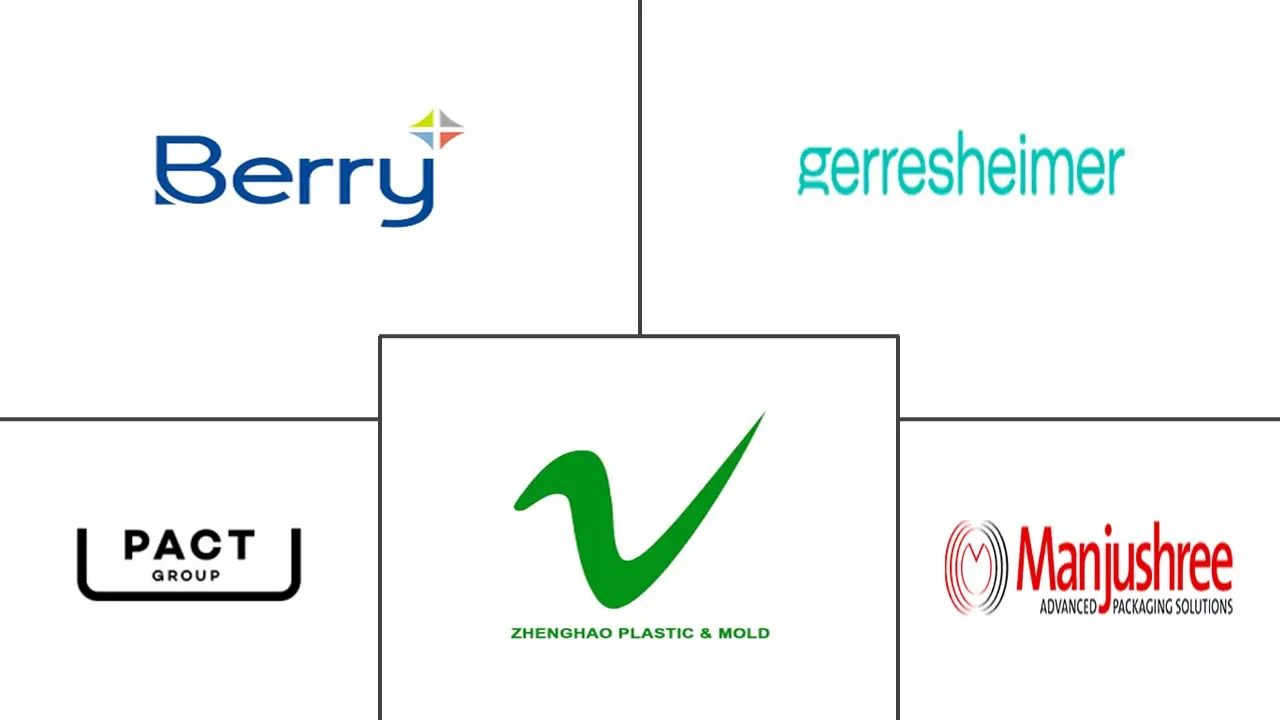Market Size of Asia Pacific Plastic Bottles Industry

| Study Period | 2019 - 2029 |
| Base Year For Estimation | 2023 |
| Market Size (2024) | USD 5.97 Billion |
| Market Size (2029) | USD 6.91 Billion |
| CAGR (2024 - 2029) | 2.98 % |
| Market Concentration | Low |
Major Players
*Disclaimer: Major Players sorted in no particular order |
Asia Pacific Plastic Bottles Market Analysis
The Asia Pacific Plastic Bottles Market size is estimated at USD 5.97 billion in 2024, and is expected to reach USD 6.91 billion by 2029, growing at a CAGR of 2.98% during the forecast period (2024-2029). In terms of production volume, the market is expected to grow from 6.5 million tonnes in 2024 to 7.49 million tonnes by 2029, at a CAGR of 2.87% during the forecast period (2024-2029).
Plastic bottles are crucial in various sectors, including the beverage, food, cosmetics, and pharmaceutical industries. New technologies and the emergence of heat-resistant PET bottles are opening new possibilities and options, which might push the market demand over the forecast period.
- Consumers increasingly favor plastic packaging because it is lightweight and unbreakable, simplifying handling. Major manufacturers also gravitate toward plastic packaging because of its cost-effectiveness. The advent of polymers like polyethylene terephthalate (PET) and high-density polyethylene (HDPE) is broadening the horizons for plastic bottle applications, leading to a surge in PET bottle demand.
- End users predominantly choose plastic bottles and containers made from polyethylene terephthalate, polypropylene, and polyethylene. This preference stems from the materials' lightweight nature and recyclability. Furthermore, the cost-effectiveness of plastics, coupled with the growing reliance on packaged and processed foods and beverages, is set to shape the market dynamics.
- According to Oriental Green Materials Limited, Taiwan uses an average of 5 billion PET bottles yearly, half of which are recycled on Oriental’s premises. The bottles are smashed, cleaned, and converted to pellets, which are then used to make bottles and other products.
- Further, the National Environment Agency and F&N Food Singapore launched an initiative to roll out smart Reverse Vending Machines (RVMs) across Singapore a few years ago. This aims to encourage Singaporeans to adopt an eco-conscious lifestyle by offering them a convenient recycling method for recycling drinks containers (plastic bottles) by depositing them in the RVMs. PET is preferred owing to its durability, cost-effectiveness, and versatility. As the end-user industries, such as food, beverage, pharmaceutical, and other sectors, expand and innovate, the need for plastic bottles and container packaging also rises.
- Plastic is a considered as significant pollutant, resulting in environmental degradation. Awareness regarding plastic's effects has been growing among users and across the industry ecosystem. Many public drives and initiatives are conducted by governments to increase this awareness. The consumption and production of plastics use large quantities of fossil fuels, which adversely impact the environment and climate. As a result, plastic packaging usage has notably declined over the past few years.

